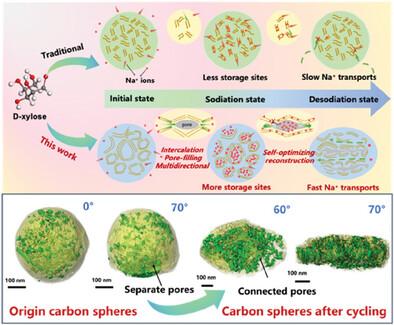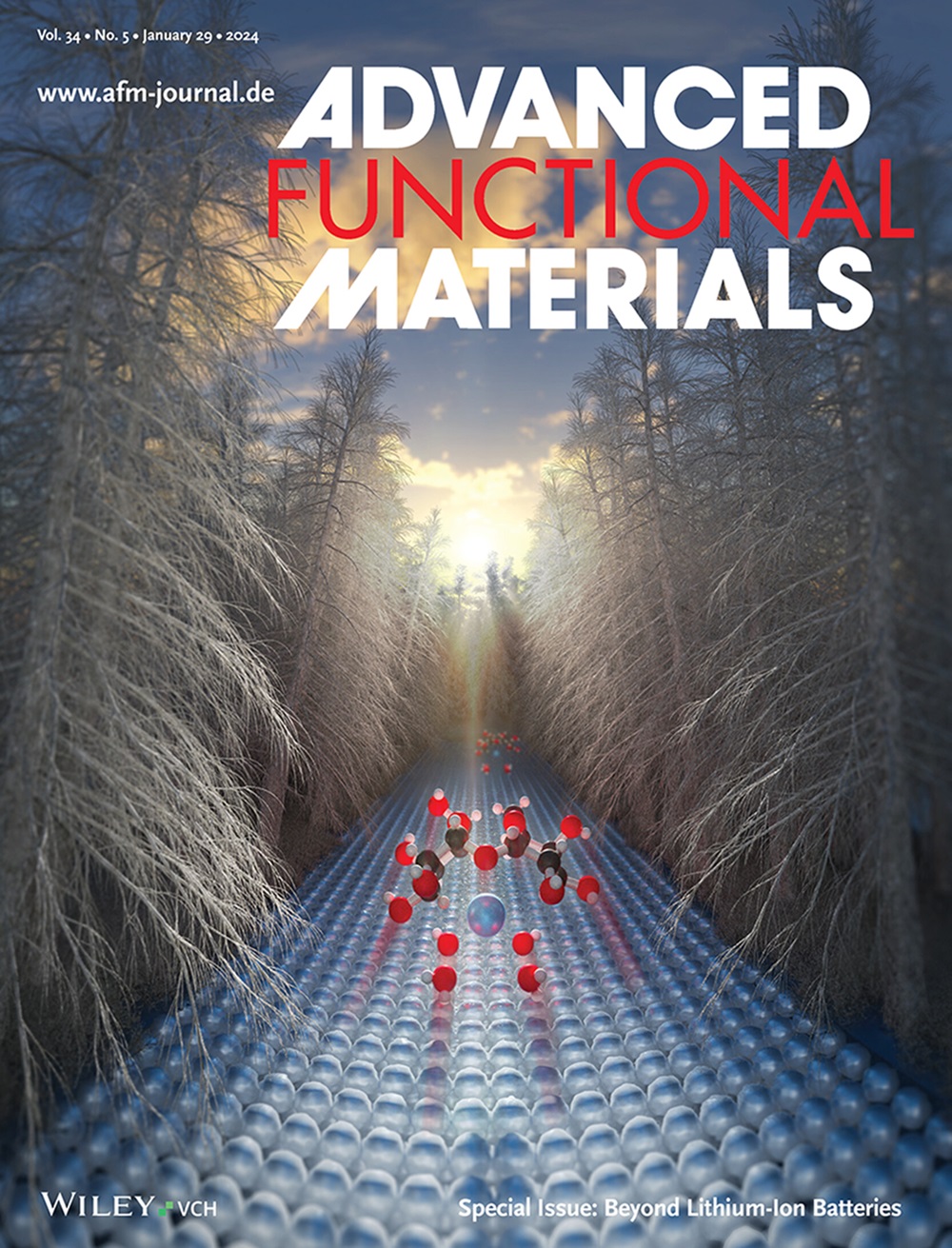Dynamic Sodiation-Driven Pore Reconstruction for Superior Initial-Coulombic-Efficiency and High-Rate in Xylose-Based Hard Carbon Anode
IF 18.5
1区 材料科学
Q1 CHEMISTRY, MULTIDISCIPLINARY
引用次数: 0
Abstract
The trade-off between initial coulombic efficiency (ICE) and rate performance of hard carbon anodes remains a challenge in their practical applications, which is highly related to their complex active surface and porous properties. In this work, a high-performance hard carbon anode is prepared using xylose as the carbon source with Co2+-assisted catalysis, which exhibits an excellent initial coulombic efficiency of 91.6%, a high capacity of 396.4 mA h g−1, superior rate performance (176.3 mA h g−1 at 5 A g−1), and outstanding cycling stability. Cobalt-ion treatment forms “expanded” graphite segments, facilitating the intercalation of desolvated sodium ions. Additionally, the intersection of these graphite segments creates “nanocaves”, enabling rapid sodium-ion transport at the initial cycling stage. Using a combination of atomic-resolution structural characterization and three-dimensional electron tomography via transmission electron microscopy, it is observed that initially isolated nanoporous holes collapsed into interconnected pancake-like pores during later cycling. The reconstructed narrow but connected pore structure provides abundant sodium storage sites and rapid charge transfer pathways, effectively accommodating structural stress during cycling. This work presents an innovative strategy for designing commercial hard carbon anode with advanced pore architectures and also provides new insight into the structural evolution of hard carbon during cycling.

求助全文
约1分钟内获得全文
求助全文
来源期刊

Advanced Functional Materials
工程技术-材料科学:综合
CiteScore
29.50
自引率
4.20%
发文量
2086
审稿时长
2.1 months
期刊介绍:
Firmly established as a top-tier materials science journal, Advanced Functional Materials reports breakthrough research in all aspects of materials science, including nanotechnology, chemistry, physics, and biology every week.
Advanced Functional Materials is known for its rapid and fair peer review, quality content, and high impact, making it the first choice of the international materials science community.
 求助内容:
求助内容: 应助结果提醒方式:
应助结果提醒方式:


